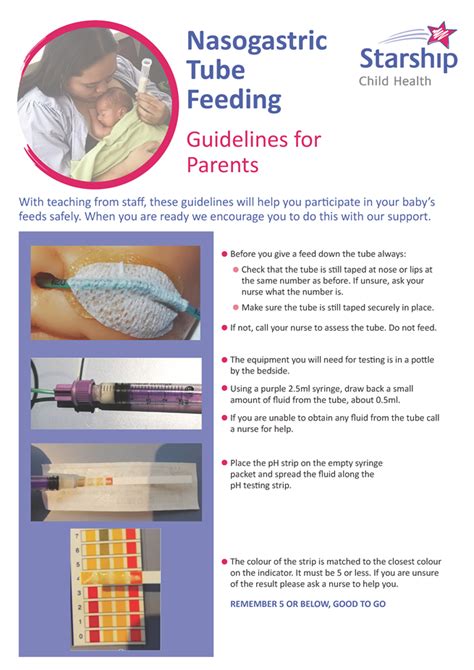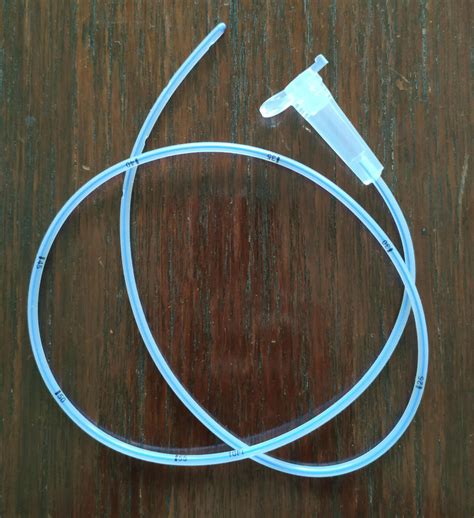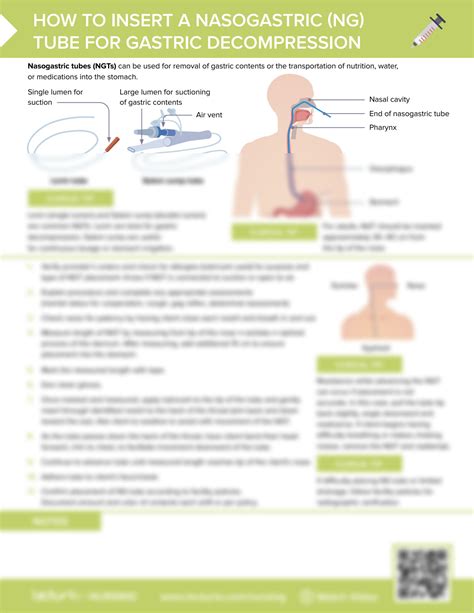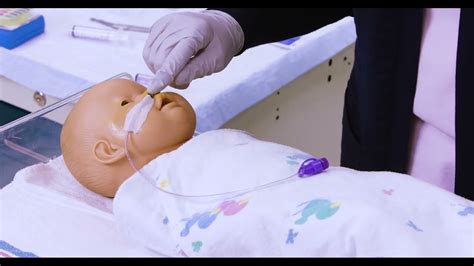Intro
Discover 5 NG tube uses, including feeding, decompression, and medication administration, highlighting nasogastric tube benefits and applications in medical settings, patient care, and nutritional support.
The nasogastric tube, commonly referred to as an NG tube, is a vital medical device used in various healthcare settings. Its primary function is to provide a direct pathway into the stomach, allowing for the administration of medications, nutrients, and other substances. The importance of NG tubes cannot be overstated, as they play a critical role in patient care, particularly for those who are unable to consume food or medications orally. In this article, we will delve into the uses of NG tubes, exploring their benefits, working mechanisms, and key information related to their application.
The versatility of NG tubes has led to their widespread adoption in medical practice. From feeding patients who are unable to eat normally to decompressing the stomach, NG tubes have become an indispensable tool for healthcare professionals. Their uses span across different medical specialties, including gastroenterology, surgery, and critical care. Understanding the various applications of NG tubes is essential for healthcare providers, as it enables them to make informed decisions about patient care. Moreover, patients and their families can also benefit from knowing how NG tubes work and their potential benefits, which can help alleviate concerns and improve the overall care experience.
The application of NG tubes is not limited to a specific patient population; instead, they can be used in a wide range of clinical scenarios. For instance, patients who have undergone surgery may require an NG tube to receive nutrition or to decompress their stomach. Similarly, individuals with certain neurological conditions, such as stroke or Parkinson's disease, may need an NG tube to ensure they receive adequate nutrition. The use of NG tubes is also common in pediatric care, where they are used to feed infants and children who are unable to consume food orally. As we explore the different uses of NG tubes, it becomes clear that their role in patient care is multifaceted and essential.
NG Tube Uses in Nutrition

Benefits of Enteral Nutrition via NG Tube
The benefits of using an NG tube for enteral nutrition are numerous. It allows patients to receive the nutrients they need to recover from illness or surgery, even if they are unable to eat by mouth. This can lead to improved outcomes, including faster recovery times and reduced rates of malnutrition. Additionally, enteral nutrition supports the immune system, which is crucial for fighting off infections and healing wounds. The use of NG tubes for nutrition also enables healthcare providers to monitor and adjust the nutritional intake of patients closely, ensuring that their dietary needs are met.NG Tube Uses in Medication Administration

Steps for Medication Administration via NG Tube
The process of administering medications through an NG tube involves several steps. First, the medication must be in a form that can be safely administered through the tube, such as a liquid or a crushed tablet that can be mixed with water. The NG tube is then checked to ensure it is properly placed in the stomach and not in the lungs, which can be done using various methods including checking the pH of the aspirate or using a chest X-ray. Once the tube's position is confirmed, the medication can be slowly administered through the tube, usually using a syringe. It is essential to flush the tube with water before and after medication administration to prevent clogging and ensure the patient receives the full dose of the medication.NG Tube Uses in Decompression

Working Mechanism of NG Tube Decompression
The working mechanism of NG tube decompression involves the creation of a pathway for air and fluid to escape from the stomach. The NG tube is inserted through the nose, guided through the esophagus, and into the stomach. Once in place, the tube can be connected to a suction device, which gently removes air and fluid from the stomach. This process helps to reduce pressure in the abdominal cavity, which can become elevated due to surgery, illness, or injury. By relieving this pressure, NG tube decompression can help alleviate symptoms such as bloating, nausea, and abdominal pain, contributing to a more comfortable and speedy recovery for patients.NG Tube Uses in Diagnostics

Practical Examples of NG Tube Use in Diagnostics
A practical example of the diagnostic use of NG tubes is in the investigation of gastrointestinal bleeding. In cases where the source of bleeding is suspected to be in the upper gastrointestinal tract, an NG tube can be used to aspirate stomach contents. The aspirate can then be analyzed for blood, which can help confirm the presence of bleeding and guide further diagnostic and therapeutic interventions. This use of NG tubes highlights their versatility and importance in patient care, extending beyond nutritional and medicinal applications into the realm of diagnostic medicine.NG Tube Uses in Pediatric Care

Considerations for NG Tube Use in Children
When using NG tubes in pediatric care, several considerations must be taken into account. The size and type of NG tube used must be appropriate for the child's age and size. Additionally, the nutritional content and volume of feedings must be carefully calculated to meet the child's nutritional needs without causing discomfort or complications. The care and maintenance of the NG tube, including regular cleaning and checking for proper placement, are also crucial to prevent infections and ensure the tube remains functional. Parents and caregivers play a vital role in the care of children with NG tubes, and educating them on the proper use and maintenance of these tubes is essential for the child's well-being.What are the common complications associated with NG tube use?
+Common complications include nasal irritation, esophageal perforation, and aspiration pneumonia. Proper placement and care of the NG tube can help minimize these risks.
How long can an NG tube be left in place?
+The duration for which an NG tube can be left in place varies depending on the patient's condition and the purpose of the tube. Generally, NG tubes are used for short-term feeding or medication administration, but they can be used for longer periods in certain cases.
Can NG tubes be used at home?
+As we conclude our exploration of the various uses of NG tubes, it is evident that these medical devices play a critical role in patient care across different medical specialties. From providing nutrition and administering medications to decompression and diagnostic purposes, NG tubes are a versatile tool that can significantly impact patient outcomes. By understanding the benefits, working mechanisms, and key information related to NG tube use, healthcare providers can make informed decisions about patient care, and patients can better appreciate the importance of these devices in their treatment plans. We invite readers to share their thoughts and experiences with NG tubes, and we encourage healthcare professionals to continue exploring innovative ways to utilize these devices to improve patient care and outcomes.
